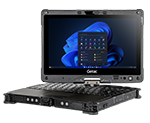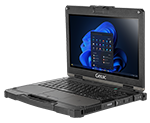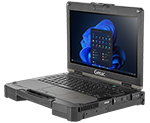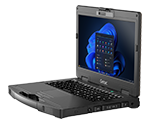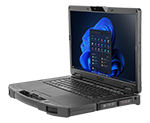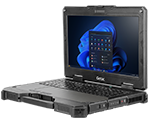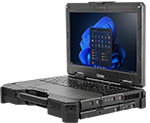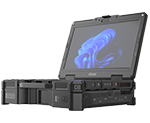INVENTORY MANAGEMENT TECHNOLOGY FOR THE MODERN WAREHOUSE
Knowing where products and raw materials are and managing their distribution through sales and supply chain networks are essential for business operations. Inventory management is the process of tracking of goods from manufacturers to warehouses and onward to points of sale.
Inaccurate or delayed inventory counts can lead to too much capital tied up in goods that don’t move or unsatisfied customers and vendors who don’t receive promised products on time.
A warehouse is an important link in inventory control. It is a central waypoint for temporary storage, order fulfillment, and shipping of basic materials or finished goods. Effective warehouse inventory management tracks products in real time and across multiple locations.

The changing landscape of modern distributed warehouses with the growth of micro fulfillment centers and vendors’ shared spaces is complicating inventory management techniques. Technology is, therefore, essential for accurate inventory control in real-time, smooth warehouse operations, and long-term productivity.
Automation helps, whether in the form of software or robots enabled by artificial intelligence. From 2022 to 2028, the global warehouse automation market will grow at an annual compound rate of 14.2 percent, according to predictions from Polaris Market Research.

What are warehouse management and inventory management software?
The most fundamental technology needed for warehouse inventory management is its associated warehouse management software (WMS).
As the name implies, WMS manages products within the walls of a warehouse and associated activities such as sorting, storage, picking, packing, and shipping. It can also control yard and dock management and receiving and loading.
WMS is different from inventory management software (IMS), which is a program that helps businesses manage stocks up and down supply chains.
Inventory management systems feed on real-time data from barcode scanners and advanced technology devices to monitor inventory levels, sales, materials purchases, and forecasts so businesses can adjust their capital spend accordingly. The software can save workers a lot of time and improve efficiency by tracking inventory levels.
Since both control the movement of goods, although, with overlapping functions, the WMS often links to the inventory management system so all data is current and all stakeholders receive the right information about the right product at the right time.
How Inventory Management Technology Improves Warehouse Operations
WMS and IMS have key features that deliver many operational advantages. These include:
- Greater accuracy through real-time inventory tracking
The outdated models of inventory management processes in warehouses accommodated a thorough count only occasionally–once a month or even every six months. Such phase lags in sales and actual inventory doesn’t work well for today’s high-volume omnichannel environments, such as in retail stores.
- Centralized platform for easy access
Updating inventory stock information as every product goes in and out of the warehouse or moves down critical parts in the supply chain helps enterprises keep an accurate count of products and associated materials.
The real-time nature of inventory management also means that all stakeholders are working with the same centralized information so they can make decisions based on accurate data.
- More visibility leading to better customer experience
Being able to track inventory, especially in today’s distributed warehouses, is important. IMS helps deliver more visibility into such information, and the WMS carries that process through into the warehouse.
Inventory controls require coordination among warehouses and distribution centers to reconcile digital records of physical inventory. More visibility means a greater ability to get products to the customer or buyer faster, often from a warehouse that is more conveniently located.
- Lowered capital expenditures
Products that sit in the warehouse for weeks or months tie up liquid capital in unsold goods. Understanding which ones need to be used or moved out can help lower related expenditures.

- Data-driven analytics
Having digital data about all inventory and warehouse processes enables more advanced technologies to find larger trends in the data and forecast supply and demand that will impact inventory and a warehouse management system.
Collected data can improve picking and packing rates in warehouses. Data-driven processes also make room for automation which shaves off more time in every aspect of warehouse operations.
- Detailed reports for warehouse managers
To keep better track of inventory data and for the audit records, reports that break down sub-processes such as purchase management, order fulfillment, sales orders, and stock reporting help. Inventory turnover rate and average days to sell, as well as aged inventory reports, are all part of the suite of information that many WMS can deliver.
Synchronizing the WMS to the IMS and Enterprise Resource Planning (ERP) software can help managers access a complete picture of inventory across all distribution centers for better operations planning. Such outcomes also help with supply chain management, which is getting increasingly critical in today's business climate.
- Radiofrequency identification technology
Radiofrequency identification (RFID) serves a similar purpose to barcode scanners. By attaching an RFID tag to products, enterprises can better manage inventory and collect data in real time about products.
The technology works using radio waves–an RFID tag attached to a product is read by an RFID reader, which relays comprehensive information. The advantage of using RFID tags is that one scanner can read multiple tags without human intervention, whereas the barcode needs to be within the line of sight of a scanner for it to be read.

- Industrial Internet of Things (IIoT)
IIoT technology essentially enables “things” to be connected to the internet and relay information about their status. Achieved through a variety of sensors, including cameras, IIoT not only automates the process of data collection but also routes unstructured data from assets that can relay live updates faster. In warehouses, for example, “talking” shelves with sensors can help with demand forecasting. Automatically trigger alerts when inventory levels reach a predetermined threshold. Predictive analytics derived from machine learning algorithms save time and the need for human resources.


Automation in the Warehouse
In addition to technology that routes information to a warehouse management system, enterprises benefit from ones that make inventory management easier and order fulfillment faster. Such digital solutions deliver customer satisfaction and provide cost savings
These include:
- Autonomous Guided Vehicles (AGV)
AGVs shorten the amount of time it takes to move products around in a warehouse by carrying heavy loads and making quick work of order fulfillment. AGVs are preprogrammed to follow guided paths using motion detectors and cameras.
- Robotics
Pallet pickers and collaborative robots are also coming on board in warehouses to lighten the load of humans and work alongside them. One of the many advantages of collaborative robots is that they can switch tasks using various end effectors (hands) to perform a variety of functions like sorting, packing, and more, in a warehouse.
Getac for warehouse management
Providing mobility to warehouse operators is vital for efficient operations and for enterprises to realize a competitive advantage. The Getac range of mobile devices does so while keeping daily operations in mind.
Getac’s inventory management solutions integrate seamlessly with enterprise digital inventory management processes, including cloud-based software.
A range of rugged devices with strong computing power provides an ideal platform for inventory and warehouse management systems.
Using these devices, supply chain managers can derive valuable insights and use those to optimize inventory management.
Learn about Getac’s Inventory and warehouse management technology


